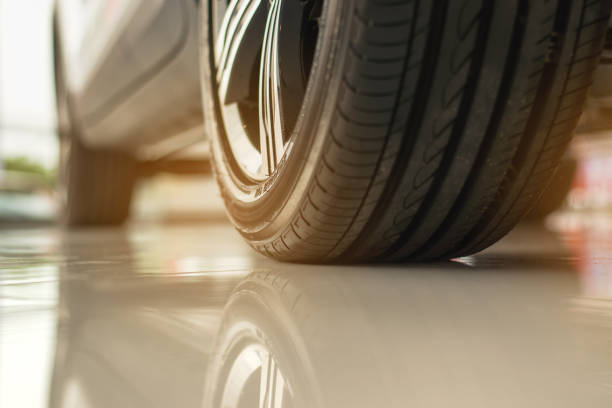Summer tires are engineered with specific rubber compounds and tread designs that enhance their performance in warm conditions. Unlike all-season or winter tires, summer tires utilize softer materials for improved grip on both dry and wet surfaces. Their unique tread patterns, featuring wider grooves, effectively channel water and reduce hydroplaning risks. Understanding these elements reveals why summer tires excel in performance. Yet, what implications does this have for driving enthusiasts?
Understanding Summer Tire Composition
Summer tires are engineered with a specific composition that enhances performance in warm weather conditions. These tires typically utilize a softer rubber compound, which provides superior grip and responsiveness on dry and wet surfaces. The formulation often includes silica, enabling better traction and reducing rolling resistance. This composition also maintains flexibility at higher temperatures, improving handling and stability.
Unlike all-season tires, summer tires for cars lack the tread features designed for winter conditions, allowing for a more streamlined profile that maximizes contact with the road. Consequently, their specialized design is essential for peak performance during warmer months, ensuring safety and driving pleasure.
Tread Design and Its Impact on Performance
While tire composition plays an essential role in performance, the tread design greatly influences traction, handling, and overall vehicle stability. Summer tires feature specialized tread patterns, including wider grooves and shallower depths, which enhance grip on dry and wet surfaces. This design minimizes hydroplaning risk, allowing for better water evacuation.
Additionally, the arrangement of tread blocks improves cornering stability and responsiveness, making them ideal for high-performance vehicles. Regular tire service guarantees that tread wear is monitored, maintaining peak performance levels. A well-designed tread not only enhances driving dynamics but also contributes to safety, making it a critical aspect of tire engineering.
Heat Dissipation and Grip Enhancement
Effective performance in vasaras riepas relies not only on tread design but also on the ability to dissipate heat and enhance grip. As temperatures rise, the rubber compounds in summer tires become more pliable, increasing contact with the road surface. Advanced tread patterns facilitate airflow, allowing for ideal heat dissipation, which prevents tire degradation.
Additionally, specialized compounds are engineered to maintain elasticity and provide superior grip, ensuring stability during high-speed cornering and braking. This synergy between heat management and grip enhancement is essential, enabling summer tires to perform efficiently in warm conditions, ultimately leading to improved handling and safety for drivers.
Comparisons With All-Season and Winter Tires
When evaluating tire performance, it becomes evident that summer tires distinctly differ from all-season and winter tires regarding design and functionality. Summer tires prioritize grip and handling in warm conditions, featuring softer rubber compounds that enhance traction on dry and wet roads. In contrast, all-season tires compromise performance to offer versatility across varying climates, while winter tires utilize specialized tread patterns and rubber compounds to guarantee safety in snow and ice.
This fundamental divergence in design results in summer tires delivering superior performance for enthusiasts and daily drivers alike, especially in warm weather, making them the ideal choice for summer driving conditions.
Real-World Benefits of Using Summer Tires
The real-world benefits of using summer tires become apparent when considering their design advantages in warm weather conditions. Engineered with specialized rubber compounds, these tires provide enhanced grip and responsiveness, greatly improving a car’s handling and braking performance. Their shallow tread depth and unique patterns minimize hydroplaning, ensuring ideal traction on dry and wet roads.
Additionally, summer tires typically offer reduced rolling resistance, contributing to better fuel efficiency. For performance-focused car enthusiasts, the superior cornering stability and feedback from summer tires create a more engaging driving experience, making them an excellent choice for vehicles primarily operated in warmer climates.
Conclusion
In conclusion, summer tires excel in warm conditions due to their specialized rubber compounds and innovative tread designs. These features enhance grip, cornering stability, and hydroplaning resistance, while effective heat dissipation guarantees peak performance at high speeds.
When compared to all-season and winter tires, the advantages of summer tires become clear, making them the preferred choice for performance-driven drivers seeking superior handling and safety in warmer climates. Shifting to summer tires can greatly elevate the driving experience.
